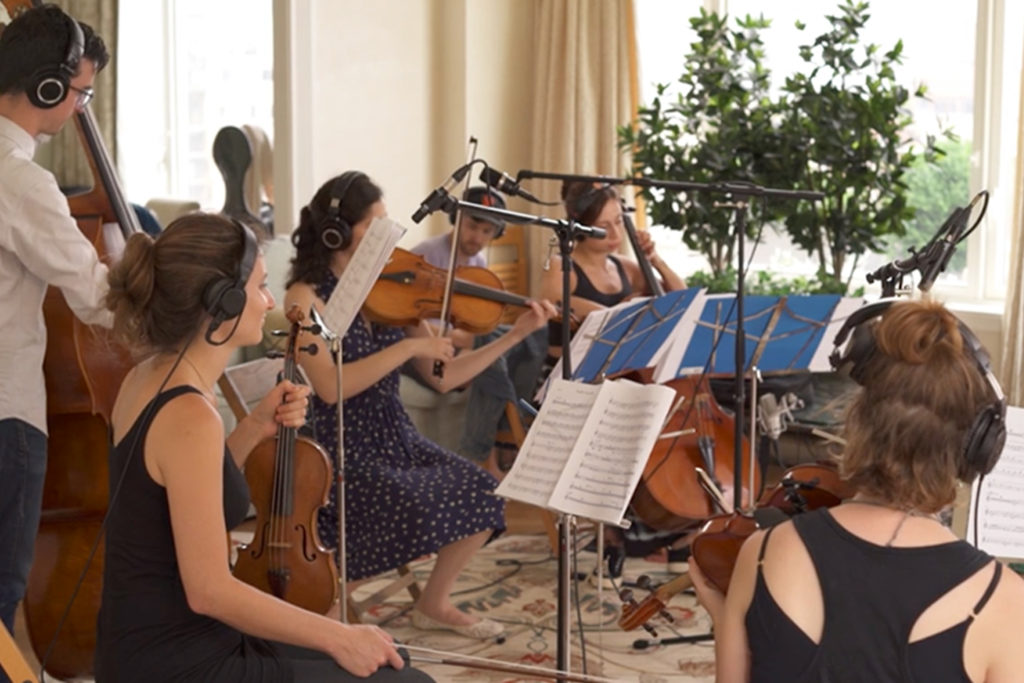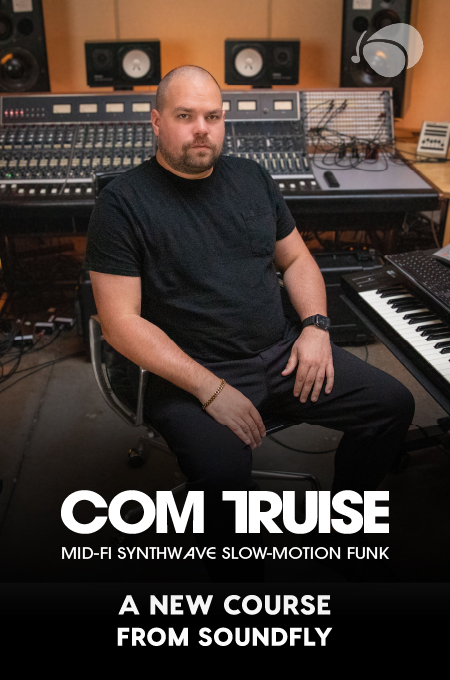+ Soundfly’s Intro to Scoring for Film & TV is a full-throttle plunge into the compositional practices and techniques used throughout the industry, and your guide for breaking into it. Preview for free today!
Originating in the German opera tradition, a leitmotif (or leitmotiv) is a recurring musical theme that encapsulates the essence of a specific character, location, situation, or theme. Leitmotifs are used to highlight and announce important characters, set scenes, reinforce story themes, and much, much more.
But the leitmotif isn’t only used in opera and symphonic works. Today, it’s quite common in film scores, TV music, and even rock operas and concept albums.
You know “The Imperial March” that plays whenever Darth Vader shows up with his legions of stormtroopers? How about the menacing bowed bass riff that signals the arrival of the shark from Jaws, or the recurring four-note “Syd’s Theme” from Pink Floyd’s “Shine on You Crazy Diamond”? You guessed it — all motifs.
“The Imperial March,” also known as “Darth Vader’s Theme,” contains one of the most iconic leitmotifs of our time. It’s simple yet harmonically interesting, and it’s memorable. Take a listen:
A Melody Is Worth a Thousand Words
When it comes to writing a leitmotif, how do you communicate the essence of character or theme in a melody? For starters, you’ll want to keep it simple with a one- or two-bar theme without too much rhythmic complexity. If your motif is too long or complex, it won’t be as memorable, and it will become more difficult to modify it later on.
To start, simply sit down with whatever instrument you’re most comfortable on and think about your subject while you improvise and try out melodic ideas.
Eventually, you’ll stumble upon a phrase, chord, or set of notes that feels “right.” From there, keep refining your idea by playing it different ways until you find the melody that sums up the essence of your character or theme. While you’re at it, take note of any alternate ideas you might be able to use later.
Here are a few ideas to use as starting points for different characters and themes:
- Heroic characters and big goals: Bold, ascending melodies anchored in the tonic or dominant.
- Villains, antagonists, and dangerous locations: Descending melodies using minor scales or dissonant notes.
- Somber themes and contemplative characters: Long, spaced-out notes or slow, expressive legato.
- High-energy characters or moments of action: Repeating triplets or other subdivided rhythms.
- Themes of peace, calm locations, or wise characters: Minimalistic melodies using soft tones.
When and How to Use Leitmotifs
So, when should you use leitmotifs? The short answer is “whenever you want,” but some of the more obvious opportunities include introducing a new or returning character, setting the scene at an important location, underscoring important plot points, or communicating a theme or idea to the audience.
The whole point of a leitmotif is to use it multiple times, so you’ll want to make sure the first appearance is memorable. You can start strong with a main character’s melody front and center, introduce a secondary character by abruptly switching to their motif, or foreshadow a villain by subtly sneaking their theme in under the main melody.
Once the theme is established, it will be even more meaningful the next time you bring it in. Successive repetitions will strengthen a motif’s significance, but be wary of using them too much—save them for the most important moments for maximum impact. If you create motifs for multiple characters, you may have to decide which is more important in a given situation or find ways to combine them without losing their significance.
The memorable leitmotif from Jaws, as heard in the opening of the film and a later scene.
+ Read more on Flypaper: “When Film Music Is a Mickey Mouse Operation.”
Switching It Up: Adapting and Changing Your Leitmotif
A good leitmotif can be adapted to suit any kind of musical mood or story moment (that’s why it’s so important to keep it simple and memorable the first time around). A character’s theme doesn’t always have to be the top-line — there are plenty of ways to adapt motifs for different situations, from varying the rhythm to changing keys and switching instruments.
Transposing a leitmotif into a different key or mode is a great way to instantly give it a new flavor. If the main theme is major, try making it minor during a sadder moment, and vice versa. To put an unexpected spin on your melody, try transposing it up or down a few steps in relation to the tonic to give it a mysterious or dissonant vibe.
Simply playing the same melody on different instruments is another great way to switch things up. Try piano for an intimate sound, brass for an epic or heroic feel, synth pads for a mysterious vibe, or choir to invoke an angelic or supernatural aesthetic. If your main instrument is guitar, bass, or keyboard, just adding an effect pedal or two can give an old melody new life.
Let’s Recap
The golden rule of music is “no rules,” so treat this article as a springboard to explore the possibilities of leitmotifs and make your own rules. Try using your motif as a bass line, inverting the melody, making it into a chord progression, or even weaving two motifs together with harmony and counterpoint.
The possibilities are endless, so open your composing software of choice (or bust out the staff paper) and start writing!
Have you checked out Soundfly’s courses yet?
Continue your learning with hundreds of lessons by boundary-pushing, independent artists like Kimbra, Ryan Lott & Ian Chang (of Son Lux), Jlin, Elijah Fox, Kiefer, Com Truise, The Pocket Queen, and RJD2. And don’t forget to try out our intro course on Scoring for Film & TV.





